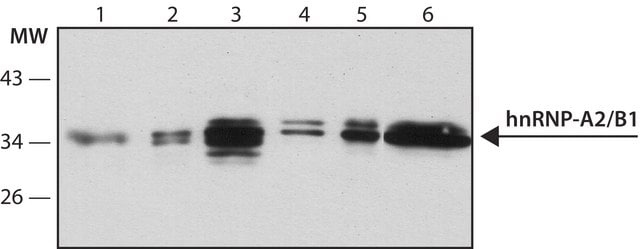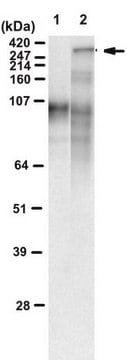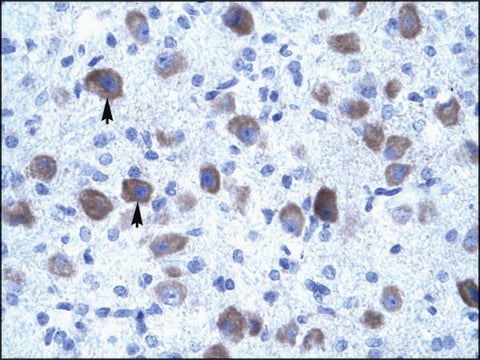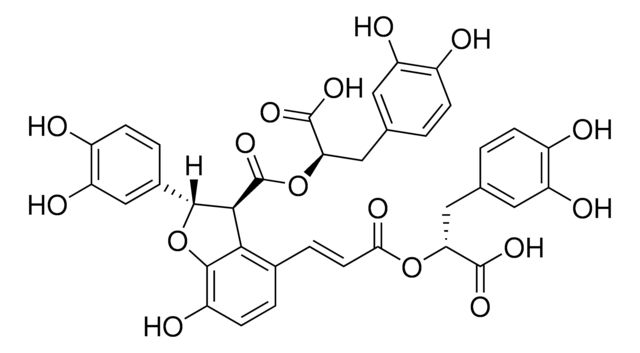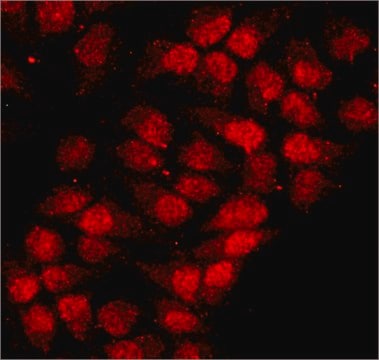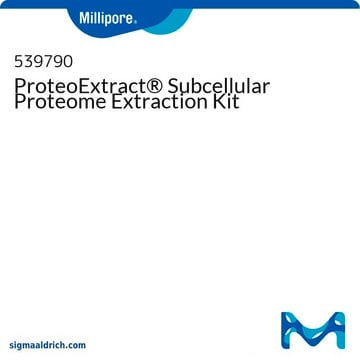MABN1788
Anti-FMR1polyG Antibody, clone 9FM-1B7
ascites fluid, clone 9FM-1B7, from mouse
Sinónimos:
FMR1polyG, FMRpolyG, FMR1 RANT, FMR1 repeat-associated non-ATG-initiated translation, FMR1 repeat-associated non-AUG-initiated translation, Fragile X mental retardation protein 1 gene RANT
Seleccione un Tamaño
368,00 €
Seleccione un Tamaño
About This Item
368,00 €
Productos recomendados
origen biológico
mouse
Nivel de calidad
forma del anticuerpo
ascites fluid
tipo de anticuerpo
primary antibodies
clon
9FM-1B7, monoclonal
reactividad de especies
human
técnicas
immunohistochemistry: suitable
western blot: suitable
isotipo
IgG1κ
Nº de acceso UniProt
Condiciones de envío
dry ice
modificación del objetivo postraduccional
unmodified
Información sobre el gen
human ... FRAXA(2477) , FRAXA(108684022)
Descripción general
Especificidad
Inmunógeno
Aplicación
Western Blotting Analysis: A representative lot detected an exogenously expressed FMR1polyG EGFP fusion construct corresponding to 5′UTR of FMR1 with 50 CGG repeats (Buijsen, R.A., et al. (2014). Acta Neuropathol. Commun. 2:162).
Neuroscience
Neurodegenerative Diseases
Calidad
Western Blotting Analysis: A 1:2,000 dilution of this antibody detected an exogenously expressed FMR1polyG GFP fusion construct in transfected COS cells.
Descripción de destino
Forma física
Almacenamiento y estabilidad
Handling Recommendations: Upon receipt and prior to removing the cap, centrifuge the vial and gently mix the solution. Aliquot into microcentrifuge tubes and store at -20°C. Avoid repeated freeze/thaw cycles, which may damage IgG and affect product performance.
Otras notas
Cláusula de descargo de responsabilidad
¿No encuentra el producto adecuado?
Pruebe nuestro Herramienta de selección de productos.
Opcional
Código de clase de almacenamiento
12 - Non Combustible Liquids
Clase de riesgo para el agua (WGK)
WGK 1
Punto de inflamabilidad (°F)
Not applicable
Punto de inflamabilidad (°C)
Not applicable
Certificados de análisis (COA)
Busque Certificados de análisis (COA) introduciendo el número de lote del producto. Los números de lote se encuentran en la etiqueta del producto después de las palabras «Lot» o «Batch»
¿Ya tiene este producto?
Encuentre la documentación para los productos que ha comprado recientemente en la Biblioteca de documentos.
Filtros activos
Nuestro equipo de científicos tiene experiencia en todas las áreas de investigación: Ciencias de la vida, Ciencia de los materiales, Síntesis química, Cromatografía, Analítica y muchas otras.
Póngase en contacto con el Servicio técnico